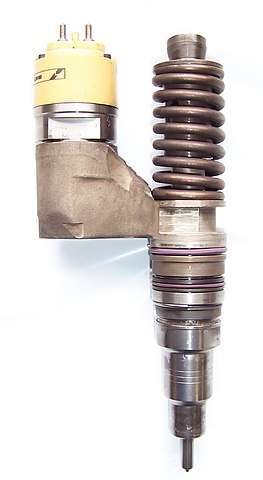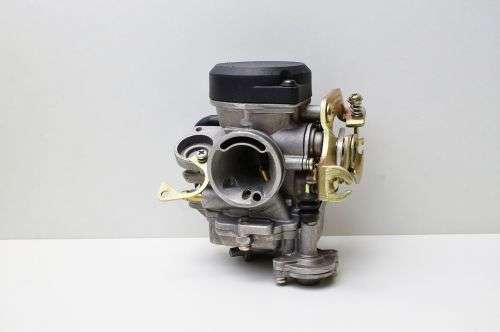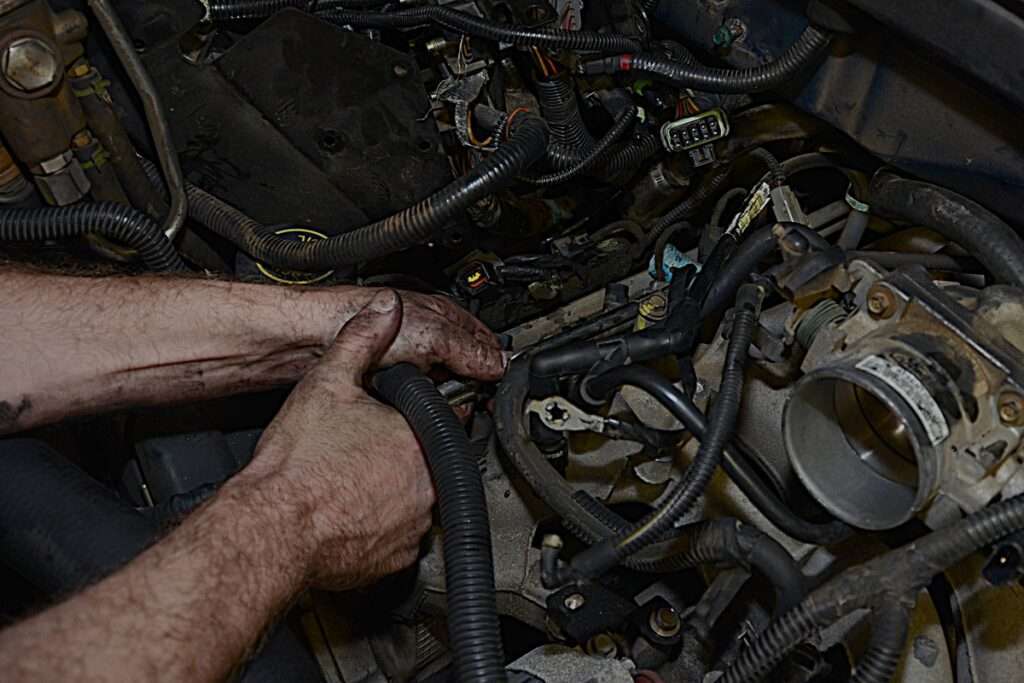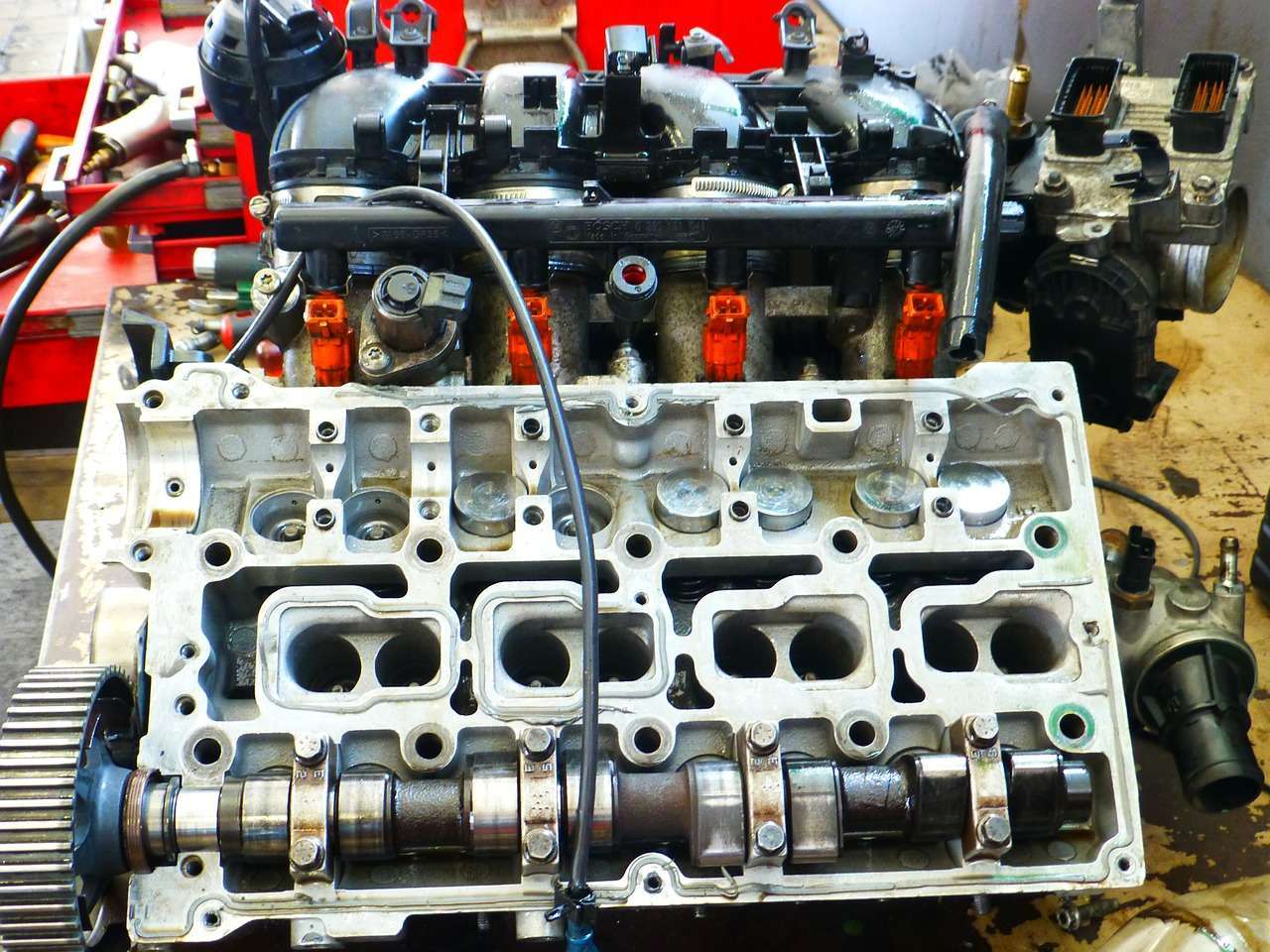Comparison of the fuel injector vs carburetor involves checking cold start performance, accuracy during fuel metering, fuel delivery control, fuel efficiency and emissions, maintenance and tuning options.
Your car is able to accelerate effortlessly as you step on the accelerator thanks to a complex vehicle fuel system of an internal combustion engine. This ingenious combination of technologies ensures that your engine receives the right amount of fuel for optimal performance.
Fuel injection vs carburetor the differences.
Some of the differences between fuel injection and carburetor fuel delivery systems are fuel metering, fuel delivery control, cold start performance, emissions and fuel efficiency among others that we’ll study below.
Engine performance and overall efficiency depends on the systems used in vehicles to deliver fuel.
1). Fuel metering accuracy.
Fuel injectors provide precise fuel metering where they deliver the exact amount of fuel needed for combustion in each cylinder. This precision allows for optimal air-fuel ratios under various operating conditions.
However, carburetors are relatively less accurate in fuel metering, as fuel mixing relies on mechanical components and fixed fuel jet sizes. This results in less precise air-fuel ratios, especially under changing engine loads and speeds.
2). Fuel delivery control.
In fuel injectors, fuel delivery is controlled electronically by the engine control unit (ECU) which allows for real-time adjustments based on sensor inputs. This enables precise control over fuel delivery for optimized engine performance and emissions.
Alternatively, in carburetors, fuel delivery is mechanical and less responsive to changes in engine operating conditions. Adjustments of fuel delivery often require manual tuning or mechanical adjustments which makes it less adaptable to varying driving conditions.
3). Cold start and warm-up performance.
Fuel injectors have the ability to adjust fuel delivery based on engine temperature and sensor inputs. Therefore, they provide better cold start and warm-up performance. This results in smoother engine operation and reduced emissions during the initial stages of engine operation.
Carburetors require manual adjustments or choke mechanisms to enrich the fuel mixture during cold starts and warm-up periods. This leads to less efficient fuel combustion and increased emissions until the engine reaches operating temperature.
4). Maintenance and tuning.
Fuel Injectors require less frequent maintenance and tuning compared to carburetors, as fuel delivery is electronically controlled and adjustments are made through the engine management system. This simplifies maintenance and reduces the need for manual adjustments.
Carburetors often require more frequent adjustments and tuning to maintain optimal performance because fuel metering relies on mechanical components that may wear over time. Tuning carburetors requires specialized knowledge and tools which increases maintenance complexity.
5). Fuel efficiency and emissions.
Fuel injectors generally offer better fuel efficiency and emissions control compared to carburetors, as fuel delivery can be optimized for efficient combustion and reduced pollutant emissions under varying operating conditions.
Carburetors are less fuel-efficient and produce higher emissions, especially in modern engines where precise fuel delivery is critical for optimal combustion and emissions control.
6). Compatibility with modern engine technology.
Fuel injectors are well-suited for use in modern engines equipped with advanced engine management systems and emissions control technologies. They integrate seamlessly with electronic engine and facilitate the implementation of features such as variable valve timing and cylinder deactivation.
Carburetors are less compatible with modern engine technologies and emissions requirements due to their mechanical nature and limited fuel metering capabilities. They are commonly found in older vehicles or small engines where simplicity and cost-effectiveness are prioritized over advanced features.
Operation comparison of fuel injection vs carburetor.
The main difference in operation of fuel injection vs carburetors is precision in delivering the right amount of fuel, their throttle response, and control over air-fuel mixture.
Fuel injection offers several advantages over traditional carburetors within the internal combustion engine. For example, the ability to optimize performance through electronic tuning and better combustion process.
Fuel injection.

A fuel injector utilizes electronic sensors and an onboard computer to precisely control the amount of fuel injected into each cylinder. The ECU optimizes fuel injection timing to offers faster response times and smoother idling compared to carburetors.
a). Fuel delivery precision.
Unlike carburetors, which rely on mechanical mechanisms to regulate fuel flow, fuel injectors use electronic sensors and actuators to precisely control the amount of fuel injected into each cylinder. This ensures that the engine receives the optimal amount of fuel for efficient combustion.
b). Throttle response.
With its ability to make quick adjustments based on real-time engine conditions, such as load and temperature, fuel injection can respond faster compared to carburetors. This results in a more immediate and responsive acceleration when you step on the gas pedal.
c). Better control over the air-fuel mixture.
Better control over the air-fuel mixture by fuel injectors is a result of better fuel atomization which mixes well with air. Therefore, resulting in improved combustion efficiency.
Cons of fuel injection.
The disadvantages of fuel injection are high initial costs, complex installation and vulnerability to electrical malfunctions.
1). Higher initial cost compared to traditional carburetors.
Fuel injection systems generally come with a higher price tag than traditional carburetors. This is due to the advanced technology and components involved in their design. While carburetors are simpler and more affordable, fuel injectors offer improved efficiency and performance.
2). Complex installation process requiring specialized knowledge or professional assistance.
Installing a fuel injection system is challenging for those without specialized knowledge or experience. Unlike carburetors, which are relatively straightforward to install, fuel injectors require precise calibration and electrical connections. It is advisable to seek professional assistance during the installation process to ensure proper functioning.
3). Dependency on electrical components, making it vulnerable to certain malfunctions or failures.
Fuel injection systems rely heavily on electrical components for their operation. This dependency makes them susceptible to malfunctions or failures if any of these components encounter issues. Electrical problems can disrupt the fuel delivery process, leading to reduced engine performance or even complete engine failure.
Carburetor.

The carburetor relies on vacuum pressure to draw fuel into the engine. Therefore, it doesn’t offer prompt responsiveness to the varying engine demands. For example, when the engine is under load, or as its temperatures change.
Uses mechanical components like jets and needles to regulate the fuel-air mixture. Carburetors do not optimize emissions control because of not balancing the air-fuel mixture within the combustion process.
Requires periodic adjustments for optimal performance due to changing environmental conditions. Manual adjustments are necessary in order to optimize the carburetor’s operation.
Key differences in fuel delivery between injection and carburetors.
Overall, while both fuel injection systems and carburetors serve the purpose of delivering fuel to the engine some of their differences are related to precision, control, adaptability, performance, emissions control, and fuel economy.
1). Mechanism of operation.
In fuel injection systems, fuel is delivered directly into the combustion chamber or intake port of each cylinder through fuel injectors. The amount of fuel delivered into the combustion chamber is precisely controlled by the engine control unit (ECU) based on various engine parameters.
Carburetors mix air and fuel in the carburetor’s venturi, a narrow throat of the carburetor’s mixing chamber, before delivering the mixture to the engine’s cylinders. Fuel delivery relies on mechanical components such as floats, jets, and needles, which regulate fuel flow based on engine speed and load.
2). Precision control over amount of fuel delivered.
Fuel injection systems offer precise fuel metering and control in order to deliver the exact amount of fuel needed for combustion in each cylinder. This precision allows for optimized air-fuel ratios under various operating conditions, resulting in improved engine performance, fuel efficiency, and emissions control.
However, carburetors provide less precise fuel metering compared to fuel injection systems. Fuel mixing and delivery are influenced by mechanical components and fixed jet sizes, leading to variations in air-fuel ratios and potentially affecting engine performance and emissions.
3). Adaptability to changes in engine operating conditions.
Fuel injection systems adapt to varying engine operating conditions in real-time, adjusting fuel delivery based on sensor inputs. For example, sensor inputs like engine speed, load, temperature, and throttle position. This adaptability allows for optimized engine performance and emissions control across a wide range of driving conditions.
Alternatively, carburetors are less adaptable to changing engine conditions, as fuel delivery adjustments often require manual tuning or mechanical adjustments. They may struggle to maintain optimal air-fuel ratios under varying loads and speeds, leading to performance and emissions issues.
4). Cold start and warm-up performance of fuel injector vs carburetor.
Fuel injection systems provide better cold start and warm-up performance due to the ability to adjust fuel delivery based on engine temperature and sensor inputs. This results in smoother engine operation and reduced emissions during the initial stages of engine operation.
However, carburetors require manual adjustments or choke mechanisms to enrich the fuel mixture during cold starts and warm-up periods. This leads to less efficient fuel combustion and increased emissions until the engine reaches operating temperature.
Factors to consider when choosing between fuel injection and carburetors.
Some of the factors to consider when making a choice between fuel injector and carburetor are your budget, the vehicle’s performance requirements, availability of compatible components and your personal preferences.
1). Vehicle’s intended use and performance requirements.
Determine the vehicle’s primary purpose, such as daily commuting, racing, or off-roading. The vehicle use will determine the engine’s demands and their variation.
Therefore, you will need a fuel delivery system that’s adaptable to the changing engine demands. Consider the desired performance level, including power output and fuel efficiency.
2). Budget constraints for initial setup and long-term maintenance.
Initial cost and ongoing maintenance expenses are important factors to consider when choosing between fuel injection and carburetors. Evaluate the cost of purchasing and installing either a fuel injection system or a carburetor. Compare the long-term expenses associated with maintenance, repairs, and replacement parts.
Carburetors may be more affordable upfront and easier to service. However, fuel injection systems may offer long-term benefits in terms of fuel efficiency, performance, and emissions compliance, potentially justifying the higher initial investment.
3). Availability of compatible components and expertise for installation and tuning.
Research the availability of compatible components for both fuel injection systems and carburetors. Assess the expertise required for installation, tuning, and troubleshooting each option.
4). Personal preference and familiarity with either fuel delivery system.
Consider personal preference based on previous experience or familiarity with one system over the other. Reflect on any specific advantages or disadvantages that resonate with personal preferences. When choosing between fuel injection systems and carburetors, several factors come into play.
Fuel injector to carburetor conversion.

Converting from fuel injection to a carburetor setup involves a process that includes several necessary modifications and recalibrations. This conversion offers benefits in terms of simplicity, cost savings, and compatibility with older vehicles.
Process of conversion from injector to carburetor.
This step-by-step process will change the current injector system into a carburetor fuel delivery system in the internal combustion engine.
1). Remove electronic components.
The first step in the conversion process is removing the electronic components associated with fuel injection, such as the fuel injectors, sensors, and control unit. Remove any electronic sensors or wiring related to the fuel injection system.
2). Removal of fuel injection components.
Disconnect and remove the fuel injectors, fuel rails, and associated fuel delivery components from the engine. Remove the fuel pressure regulator, fuel pump, and fuel lines, in the fuel injection system. Clean and inspect the intake manifold and cylinder head mating surfaces to ensure a proper seal for the carburetor.
3). Install a carburetor and intake manifold.
Once the electronic components are removed, a carburetor needs to be installed in place of the fuel injector system. Firstly, install the intake manifold onto the engine block, using appropriate gaskets and hardware to seal the mating surfaces.
Afterwards, mount the new carburetor onto the intake manifold and connecting it to the engine’s air intake system. Ensure proper fitment and alignment with the engine block. Attach the throttle linkage to the carburetor, connecting it to the accelerator pedal for throttle control.
4). Fuel system modification.
Install a mechanical fuel pump or electric fuel pump suitable for carbureted engines, along with a fuel pressure regulator if necessary. Afterwards, route new fuel lines from the fuel tank to the carburetor, ensuring proper sizing, routing, and secure connections. Then install a fuel filter in the fuel line to protect the carburetor from contaminants.
5). Adjust fuel delivery.
Unlike fuel injection systems that regulate fuel delivery electronically, carburetors rely on mechanical adjustments. It is essential to properly adjust the carburetor’s float level and jet sizes to ensure optimal fuel-air mixture for efficient combustion.
6). Ignition system adjustment.
Adjust the ignition timing to suit the requirements of the carbureted engine, using a timing light and distributor adjustment tools. Ensure that the spark plugs are compatible with the ignition system and engine specifications, and replace them if necessary.
7). Tuning and calibration.
Calibrate the carburetor settings for optimal fuel and air mixture, idle speed, and throttle response. Fine-tune the carburetor adjustments, such as the idle mixture screws, throttle plate adjustment, and accelerator pump settings, to achieve smooth engine operation.
Benefits of changing from fuel injection to carburetor.
The several advantages of switching from fuel injection to a carburetor are simplified maintenance, long term cost savings, and compatibility with aftermarket parts.
1). Simplified maintenance.
One significant benefit is simplified maintenance. With fewer electronic components requiring attention, troubleshooting and repairs become less complex. This not only saves time but also reduces the overall maintenance costs.
2). Cost savings.
Transitioning to a carburetor can lead to cost savings. Complex fuel injection systems often require expensive repairs or replacements.
Reduced expenses on repairs or replacements because the carburetor is not a complex fuel injection system. Lower maintenance costs due to simpler design and fewer components
3). Increased compatibility with aftermarket parts.
Once you convert from fuel injection to carburetor fuel delivery systems, it gives you the ability to use aftermarket parts specifically designed for carbureted engines. Therefore, you have more options available for customization and upgrades.
4). Classic driving experience.
Improved throttle response for a more engaging driving experience and adjustments are made manually to suit the engine power demands and driving conditions.
Optimizing engine performance: Tips for fuel injection and carburetors.
Regular maintenance is crucial to ensure optimal internal combustion engine performance from both fuel injection systems and carburetor fuel delivery systems.
Regular maintenance and tuning are some of the tips that help you to maximize your engine’s efficiency and power output.
Important tips for regular maintenance of the fuel injection and carburetor fuel delivery systems.
Regular maintenance of the fuel delivery system involves routine inspection of components, cleaning and it is essential for both fuel injection systems and carburetors.
1). Routine inspection.
Routine inspections and cleanings ensure proper fuel delivery and combustion. Regularly inspect fuel lines for signs of wear, corrosion, or leaks. Replace any damaged or deteriorated fuel lines to prevent fuel leaks and ensure proper fuel delivery.
2). Cleaning the fuel delivery system.
Vehicle fuel system cleaning helps prevent clogs, leaks, and other issues that can hinder performance. It involves throttle body and injector cleaning.
a). Throttle body/carburetor maintenance.
Clean the throttle body or carburetor regularly to remove carbon deposits and buildup. Use throttle body cleaner or carburetor cleaner and a soft brush to clean the throttle plate and internal passages.
b). Injector cleaning.
Periodic fuel injection cleaning prevents fuel injector clogs and ensures proper fuel atomization. Use fuel injector cleaner additives or have the injectors professionally cleaned if needed.
3). Fuel pump maintenance.
Test the fuel pump regularly to ensure proper operation. Secondly, listen for unusual noises such as whining or humming coming from the fuel pump, which is a symptom that indicates a failing pump. Lastly, replace the fuel pump if necessary.
4). Use the best fuel quality.
Always use high-quality fuel from reputable sources. Contaminated or poor-quality fuel leads to clogs, deposits, and engine performance issues.
5). Regular fuel filters replacement.
Replace fuel filters at regular intervals as recommended by the vehicle manufacturer. Clogged fuel filters restrict fuel flow, leading to engine hesitation, stalling, or poor acceleration.
Tuning tips for fuel injection systems.
To optimize the performance of your fuel injection system, consider adjusting the air-fuel mixture ratios and adjusting ignition timing to match every engine cycle.
1). Adjust air-fuel ratios.
Fine-tuning the air-fuel mixture can improve combustion efficiency. Consult your vehicle’s manual or a professional tuner for recommended ratios.
2). Ignition timing.
Proper ignition timing ensures optimal power delivery. Experiment with advancing or retarding the timing to find the sweet spot.

